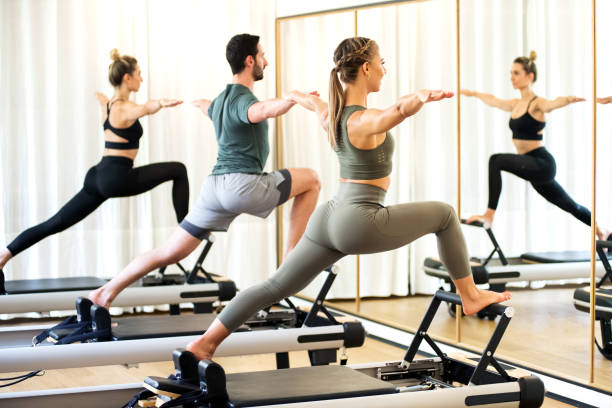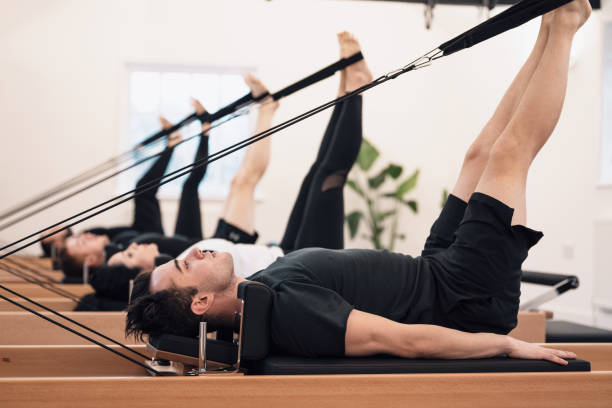
Partaking in sports or exercise is a great way to stay healthy, both mentally and physically. However, if you’re experiencing foot or ankle pain that is interfering with your training regime, it’s time to see a Melbourne sports podiatrist.
Aside from providing expert treatment, the best sports podiatrists also help athletes overcome hurdles to recovery and enhance performance. Here are some of the ways they do this:
Rehabilitative Strategies
Whether you are an elite athlete or just getting back into exercise, your Melbourne sports podiatrists can help you get there faster. Using their knowledge of a wide range of rehabilitation strategies they can develop a specific program that addresses your injury and ensures a quick and safe return to activity.
In the early stages of recovery, treatment focuses on increasing stability and mobility to minimise pain, inflammation and swelling. This may involve manual therapy, stretching, dry needling, and electrical muscle stimulation (EMS).
As the injury progresses, rehabilitation is aimed at increasing strength. This can be achieved through isometric exercises, elastic bands of varying resistance, free weights, cuff weights, and other strength equipment.
The final stage of recovery focuses on proprioception and balance training. Proprioception is your body’s ability to sense its position in space without looking. This is a key aspect of balance and is often compromised by sporting injuries. Improving this can reduce the time it takes for you to return to your sport and help prevent re-injury.
Sports podiatrists are a group of enthusiastic and passionate podiatrists who work closely with their patients to formulate a tailor-made treatment plan for each individual. They are all very active, participating in a wide variety of sports and physical activities, and understand the stress that sports can place on the feet and lower legs. They are also aware of the importance of prevention and can provide advice on techniques, equipment, and footwear to aid in injury prevention.
Education
Sports podiatrists educate clients on the importance of proper foot and ankle care to prevent injuries. This education often focuses on specific areas like strengthening exercises, stretching routines, and appropriate footwear to support a healthy lower limb and feet. This type of education is not only beneficial to athletes but to anyone who partakes in recreational exercise or sports.
Acute injuries, such as sprains and strains, are commonly seen by sports podiatrists. These injuries are typically caused by an abrupt change in movement, direct impact, or falls. These injuries require immediate attention to reduce swelling, pain, and inflammation.
In contrast to acute injuries, chronic sports injuries are typically caused by repetitive movements or biomechanical faults. The foot and lower leg must absorb forces up to three times the weight of the body when playing sports, putting increased loads on muscles and tendons. This increased load can cause overuse injuries, such as shin splints and plantar fasciitis.
To avoid these types of injuries, sports podiatrists recommend incorporating foot flexibility exercises into warm-up and cool-down activities. They also encourage the use of foam rollers to improve foot and ankle stability and reduce imbalances. They may even recommend custom orthotics to stabilise the feet and reduce injury risk.
Follow-Up Care
Men and women at all fitness levels can benefit from sports podiatry. Getting back into exercise after an injury, surgery, break or vacation can be difficult – but pushing too hard when returning and presuming your body is at its previous state can cause a host of new problems and injuries.
As part of a comprehensive injury management plan, podiatrists design individualised muscle strengthening and exercise programs. These can help you regain strength, stability, and balance in the affected area. They can also help prevent recurrence and promote long-term musculoskeletal health.
Footwear is another critical factor in injury prevention. Inappropriate footwear can lead to a host of problems, including shin splints, arch pain, and Achilles tendon issues. Podiatrists have the experience and knowledge to guide you through the process of selecting suitable footwear for your sport or activity.
In addition to managing sports injuries, a podiatrist can help you prepare for your return to running, cycling, and other high-impact activities. They can help you modify your training schedule and increase your mileage slowly, preventing injury while ensuring a safe return to running or cycling. They can also help you to identify the underlying factors that may be contributing to your injury and recommend appropriate treatments, such as stretching or massage. This is a great way to minimise the risk of injury and improve your performance and recovery.
Collaborative Care
In addition to providing a treatment plan that is designed to help you recover, a sports podiatrist can also offer ongoing care. They can provide support via taping or strapping, design a gait analysis, do exercises to help mobilise your joints and muscles, and provide strength programs that focus on rebuilding strength and reducing injury risk. They can even assist with advising you on the right type of footwear to ensure that your feet are supported, allowing for a safe return to exercise and preventing future injuries.
Many people seek out the services of a sports podiatrist when they are trying to get back into exercising after a break. Whether that break was due to pregnancy and the postpartum period, surgery and recovery, or just a prolonged absence from exercise due to work commitments, pushing too hard when you are returning can lead to injuries. A sports podiatrist can design a comprehensive exercise program that will allow you to return gradually, minimising the likelihood of additional injury.
While many sports podiatrists can aid in the recovery of existing injuries, they are often better known for their work on injury prevention. Athletes and fitness enthusiasts who want to keep running and training without injury often seek the advice of a sports podiatrist. They can provide a thorough biomechanical assessment, advise on appropriate footwear, design strength programs, and prescribe foot orthoses to correct abnormalities and reduce the risk of future injury.
Advancing Athletic Performance and Injury Prevention
Injuries can be a setback for athletes and fitness enthusiasts alike, but with the assistance of sports podiatrists, the journey to recovery and prevention becomes more manageable. From tailored rehabilitation strategies to educational guidance and collaborative care, sports podiatrists offer comprehensive support to individuals at all fitness levels. By addressing acute injuries promptly, preventing chronic issues, and providing ongoing follow-up care, they ensure a smoother return to activity while reducing the risk of future setbacks.
Book your appointment today at melbournepodiatristsandorthotics.com.au and take the first step towards a healthier, injury-free sporting journey. Whether you’re a seasoned athlete or just getting back into exercise, their team of dedicated professionals is ready to guide you toward optimal foot and ankle health. Don’t let foot or ankle pain hold you back any longer – invest in your well-being and pursue your athletic goals with confidence.




 Attention Deficit Hyperactivity Disorder (ADHD) presents unique challenges for both students and educators. In Sydney schools, addressing the needs of students with ADHD requires specialized strategies and support systems, especially in the context of tutoring. This article delves into effective tutoring strategies tailored to support students with ADHD in Sydney schools, aiming to enhance their learning outcomes and overall academic success. ADHD can significantly impact a student’s ability to concentrate, organize tasks, and regulate behavior, making it essential for tutors to employ targeted approaches that cater to the individual
Attention Deficit Hyperactivity Disorder (ADHD) presents unique challenges for both students and educators. In Sydney schools, addressing the needs of students with ADHD requires specialized strategies and support systems, especially in the context of tutoring. This article delves into effective tutoring strategies tailored to support students with ADHD in Sydney schools, aiming to enhance their learning outcomes and overall academic success. ADHD can significantly impact a student’s ability to concentrate, organize tasks, and regulate behavior, making it essential for tutors to employ targeted approaches that cater to the individual 



